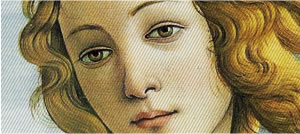
In 1560 the architect Giorgio Vasari started building for Grand Duke Cosimo I the imposing palace called Uffizi: the 16th century word meant offices, as the palace had to be the seat of the offices of thirteen guild and magistrates. The top floor, completed in 1580, was destined to the collection of artworks of the Medici family.
The Uffizi Gallery still houses many masterpieces of famous painters, displayed in chronological order. From Cimabue, the greatest master of the romanesque style, the itinerary through the museum shows the revolution carried on by Giotto at the beginning of the 14th century up to the precious late gothic art of Gentile da Fabriano of the early Quattrocento. Paintings by Masaccio, Paolo Uccello, Piero della Francesca and Filippo Lippi witness the new ideas of the Renaissance, while the golden age of Lorenzo the Magnificent is the background of the masterpieces by Sandro Botticelli, the Birth of Venus and the Allegory of Spring. The exhibit continues with famous paintings of the 16th century, by Leonardo, Raffaello, Tiziano and Michelangelo: of the great genius the museum owns the only documented picture, the Doni tondo. A large section, dedicated to Seicento artists, displays the Bacchus and the Medusa by Caravaggio and artworks by many of his followers, among them the famous Artemisia Gentileschi. The most recent period represented in the collection is Neoclassical art of the 18th century, the prelude to modern art.









